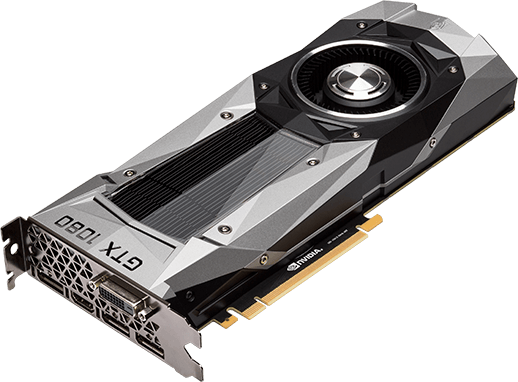NVIDIA unveiled their new range of graphics cards, the 1000 series, at a press event in Austin, Texas, last week. With the GeForce GTX 1080 due to launch later this month and the GeForce GTX 1070 cards arriving in June 2016, VRFocus has dived into the line-up to offer virtual reality (VR) enthusiasts a comparison guide for the specifications of each model, and how they compare to those currently on the market.
The GeForce GTX 970 is commonly cited as the minimum specification graphics card for VR by both Oculus VR for the Oculus Rift and HTC/Valve for the HTC Vive. The GeForce GTX 980 and GeForce GTX 980 Ti have both been available for nearly a year, and both exceed the capabilities of the GeForce GTX 970. However, in comparison to the GeForce GTX 1080 and GeForce GTX 1070, the gap between each card in the 900 series appears to be reduced to an almost insignificant level. NVIDIA’s Titan X graphics card has previously been seen as the high-end solution, yet according to NVIDIA themselves the GeForce GTX 1080 significantly exceeds the power of this card. The GeForce GTX 1070 will deliver a similar level of performance to the Titan X, the hardware manufacturer has suggested. What all of this means for VR has not yet been revealed, but the simple fact of the matter is that more computational power will lead to more stable framerates and better visual fidelity: two assets that are incredibly important to the level of immersion that can be gained from a VR experience. The technical specifications listed below were revealed at NVIDIA’s press event, and VRFocus will have much more detailed coverage of the GeForce GTX 1080 in weeks to come.
| GTX 1080 | GTX 1070 | GTX 980 Ti | GTX 980 | GTX 970 | |
| Technique | 16 nm FinFET | 16 nm FinFET | 28 nm | 28 nm | 28 nm |
| GPU | GP104 | GP104 | GM200 | GM204 | GM204 |
| Transistors | 7,2 md | 7,2 md | 8 md | 5,2 md | 5,2 md |
| Calculating Power | 9,0 TFLOPS | 6,5 TFLOPS | 5,6 TFLOPS | 4,6 TFLOPS | 3,9 TFLOPS |
| Architecture | Pascal | Pascal | Maxwell | Maxwell | Maxwell |
| CUDA Cores | 2 560 st. | 2 048 st. | 2 816 st. | 2 048 st. | 1 664 st. |
| Base Frequency | 1 607 MHz | – | 1 000 MHz | 1 126 MHz | 1 050 MHz |
| Turbo Frequency | 1 733 MHz | – | 1 075 MHz | 1 216 MHz | 1 178 MHz |
| Bus | 256-bit | 256-bit | 384-bit | 256-bit | 256-bit |
| Memory | 8 GB GDDR5X | 8 GB GDDR5 | 6 GB GDDR5 | 4 GB GDDR5 | 4 GB GDDR5 |
| Memory Freq. | 10 012 MHz | 8 000 MHz | 7 012 MHz | 7 000 MHz | 7 000 MHz |
| Memory Bandwidth | 320 GB/s | 256 GB/s | 336,6 GB/s | 224 GB/s | 224 GB/s |
| Power Supply | 8-pin | 8-pin | 6+8-pin | 6+6-pin | 6+6-pin |
| Outputs | 3 st. DP 1.4 1 st. HDMI 1 st. DVI-I | 3 st. DP 1.4 1 st. HDMI 1 st. DVI-I | 3 st. DP 1.2 1 st. HDMI 1 st. DVI-I | 3 st. DP 1.2 1 st. HDMI 1 st. DVI-I | 3 st. DP 1.2 1 st. HDMI 1 st. DVI-I |
| TDP | 180 W | 150 W | 250 W | 165 W | 148 W |















